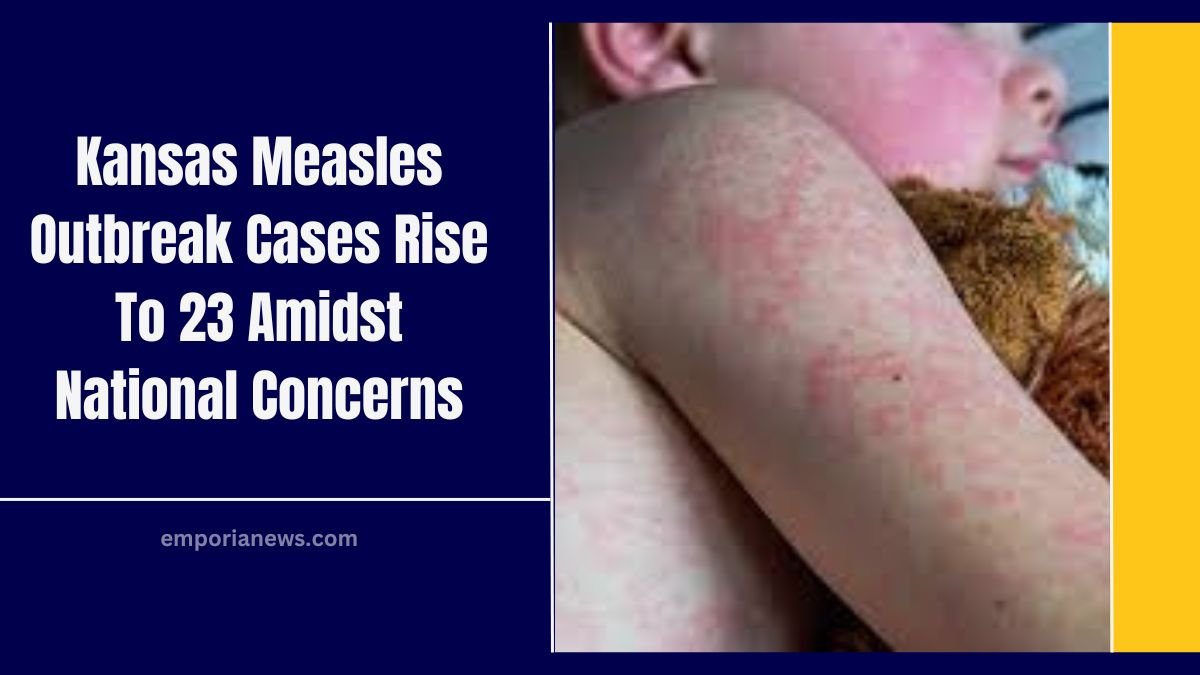In a concerning development, measles cases in Kansas have surged from 10 to 23 within a week, prompting the Kansas Department of Health and Environment (KDHE) to declare an outbreak.
This uptick aligns with a broader national trend, as the Centers for Disease Control and Prevention (CDC) reports a total of 378 confirmed cases across 18 jurisdictions in 2025.
Geographic Distribution of Cases
The outbreak’s epicenter is in southwest Kansas, with cases spreading eastward to Kiowa County. The distribution is as follows:
- Kiowa and Stevens Counties: Each reporting six cases.
- Grant, Gray, Haskell, and Morton Counties: Each reporting one to five cases.
Demographics and Vaccination Status
All 23 cases involve children, except for two individuals over the age of 18. Notably, 20 of these individuals were unvaccinated, highlighting a significant gap in immunization coverage.
Symptoms and Transmission
Measles is highly contagious, with the virus capable of lingering in the air for up to two hours. Symptoms typically appear 7 to 14 days post-exposure and include:
- High Fever: Often exceeding 104°F.
- Cough, Runny Nose, and Red, Watery Eyes: Common initial signs.
- Koplik Spots: Small white spots inside the mouth, appearing 2-3 days after symptom onset.
- Rash: Flat red spots starting at the hairline and spreading downward.
National Context
The Kansas outbreak contributes to a national increase in measles cases, with Texas reporting 327 cases and New Mexico 43, as of March 20, 2025.
These developments underscore the critical need for widespread vaccination to prevent further spread.
Vaccination Recommendations
Health officials strongly recommend the MMR (Measles, Mumps, and Rubella) vaccine for all individuals, especially those in affected areas.
The vaccine is typically administered in two doses, with the first at 12-15 months and the second at 4-6 years of age. For adults uncertain of their vaccination status, options include:
- Kansas WebIZ Public Portal: Access immunization records online.
- Contacting Healthcare Providers: Discuss vaccination history and consider a titer blood test to assess immunity.
Preventive Measures
To mitigate the outbreak’s impact, individuals should:
- Stay Informed: Monitor updates from KDHE and local health authorities.
- Practice Good Hygiene: Regular handwashing and wearing masks can reduce transmission risk.
- Seek Vaccination: Unvaccinated individuals should consult healthcare providers promptly.
Measles Cases by County
| County | Number of Cases |
|---|---|
| Kiowa | 6 |
| Stevens | 6 |
| Grant | 1-5 |
| Gray | 1-5 |
| Haskell | 1-5 |
| Morton | 1-5 |
The rapid increase in measles cases in Kansas serves as a stark reminder of the importance of vaccination.
By staying informed and ensuring timely immunization, individuals can protect themselves and their communities from this highly contagious disease.




